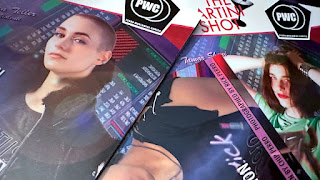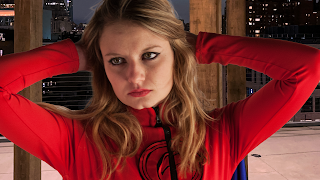Formatting Your Comic
There are so many books dedicated to drawing, but there is far less information about the tools of the trade, what to draw your comic on, or how to format your comic for printing.
Because it's such an important part of the process, let's jump right in and find out how it's done!
1. Drawing, Inking, and Coloring
Pencils: Number 2 pencils are still the industry standard for drawing. Some artists prefer mechanical pencils, but it's a personal choice. Both options are professional. Charcoal pencils are NOT used for comic book drawing
Erasers: Most artists like to use gum erasers, but classic pink block erasers work just fine, too.
Inking: Inking can be accomplished classically with a quill-pen and (black india) ink. Today, most artists opt for pens and markers, which take away the risk of ink spills. Faber-Castell and Micron both offer pens and markers for inking comic book art, in a variety of sizes, from fine-tip, to thick-brush-tip. With all pens and markers, you're looking for black archival ink.
Coloring: Coloring can be accomplished with alcohol-based artist markers. They come in a variety of colors, with fine and thick tip ends. (Note: Today, scanning inked drawings and coloring them digitally is more common.)
Where to buy: All of these supplies are affordable, and can be purchased at art supply stores, craft stores like JoAnn's Fabrics, Michaels, and Hobby Lobby, and online through dickblick.com.
2. Paper
Comic books are drawn on Bristol Board. Just like your drawing supplies, Bristol Board can be purchased at art supply stores, craft stores like JoAnn's Fabrics, Michaels, and Hobby Lobby, and online through dickblick.com.
Bristol Board comes in a variety of shapes, and paper-thicknesses, but the comic industry standard is 11x17"
Strathmore is a leading seller of Bristol Board, and offers industry standard 11x17" Bristol Board in a variety of weights and finishes. All of their paper is high quality, and will allow you to produce professional comic books.
3. Comic Book Formatting Rules.
I find people often describe the formatting of a comic page in needlessly complex detail.
Let's see if we can't simplify!
1. When comics are printed, some of the art is cut off, so it's vital to keep all important art, panels, and dialog within a boarder that we know won't be cut off after printing. That boarder is called the live-area.
2. Outside the Live area is the trim-line. This is the line that marks where the comic page is cut when printed.
3. Outside the trim-line is the bleed line. This is the line that all art you want to see extend to the edge of the page is drawn to.
Now, how do we measure these lines?
Imagine your 11x17" sheet of Bristol Board as a single page. Measure 1 inch on either side, and 1.5 inches on the top and bottom. Then draw a box. That's your live-area. How you lay out the panels within the live-area is up to you.
The trim-line is 5/8 of an inch on the sides, and 1 inch on the top and bottom.
The Bleed Line is 1/4 of an inch out from the trim-line.
If you don't want to measure, most Bristol Board makers, including Strathmore, sell Bristol Boards with pre-drawn boarders for artists, that takes away the need to draw them by scratch.
4. Comic Strip Formatting Rules.
For those interested in creating a daily comic strip, I am also providing the formatting specifics for a standard strip:
Just like comic books, comic strips use the same drawing supplies, and are drawn on Bristol Board.
The full rectangular size for a single daily strip is 13x4”. Most artists block out either three or four panels within that rectangle. No matter how many panels you choose, there is a ¼” gutter in between each panel. In print, the strip is reduced to 6” x 1.84”
To avoid measuring out panels day after day, create a stenciled template. Draw the sized boxes in the center of a single 11x17” page of Bristol Board, and cut them out. Then, when you're ready to draw your next strip, layer your stencil over your paper to easily draw your boxes.
To avoid measuring out panels day after day, create a stenciled template. Draw the sized boxes in the center of a single 11x17” page of Bristol Board, and cut them out. Then, when you're ready to draw your next strip, layer your stencil over your paper to easily draw your boxes.



Comments
Post a Comment